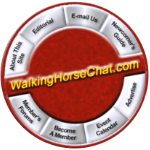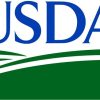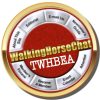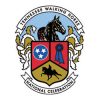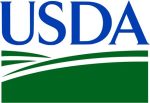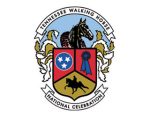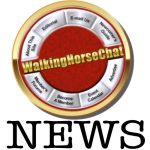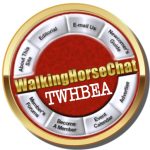The comment period for the USDA’s latest proposed rule to amend the Horse Protection Act ended yesterday, October 20th. The industry hired Ellis, George, Cipollone to prepare its comments and those were filed late yesterday afternoon. Below you will find an executive summary of those comments.
The USDA will now review all of the comments received in response to the proposed rule and make needed changes to prepare a final rule. The USDA will once again be required to send the proposed final rule to OMB/OIRA for its review. Once OMB/OIRA send the rule back to USDA, a final rule will be prepared and sent to the office of the Federal Register to be printed and become final.
The industry has the option, if it remains in disagreement, to challenge the rule’s implementation in court and would seek a stay. The effective date of the rule will also be at some point in the future after its printing in the Federal Register.
THE TENNESSEE WALKING HORSE NATIONAL CELEBRATION ASSOCIATION’S COMMENTS ON 2023 USDA PROPOSED RULE
On August 21, 2023, the U.S. Department of Agriculture (“USDA” or “Agency”) issued a Notice of Proposed Rulemaking (“Proposed Rule”) proposing to amend the Agency’s current regulations by which it enforces the Horse Protection Act (“HPA”). While the Proposed Rule purports to strengthen the Agency’s regulations in order to protect horses from soring, the Rule proposed a number of sweeping changes to the existing regulations that would not only fail to address soring in any meaningful way, but would potentially devastate the Tennessee Walking Horse show industry. On October 20, 2023, The Tennessee Walking Horse National Celebration (“TWHNCA” or “Association”) submitted public comments (“Comments”) highlighting the numerous problems with the Proposed Rule. While the hope is that USDA will react to the Comments by withdrawing the Proposed Rule, the Comments will also form part of the record on which any future litigation challenging the rule will be based.
THE PROPOSED RULE
The USDA justifies the Proposed Rule by explaining that “soring persists despite the Agency’s efforts to regulate and work with the Tennessee Walking Horse and racking horse industries to eliminate the practice.” It claims that the Proposed Rule would “strengthen regulatory requirements intended to protect horses from soring and eliminate unfair competition.” The amendments in the Proposed Rule fall roughly into three categories:
(1) Amendments that would impose blanket bans on using pads (supplemental weight on the underside of a horseshoe) and action devices, hoof bands, and substances—but only for Tennessee Walking Horses or Racking Horses at Horse Events. Other breeds of horses that are covered by the HPA are exempt from these bans. USDA justifies the differential treatment because, “based on [its] informed knowledge about the practices of all breeds performing or exhibiting in the United States, [it] know[s] that soring in breeds other than Tennessee Walking Horses and Racking Horses confers no significant performance advantage and is therefore rarely if ever practiced.” 88 Fed. Reg. at 56937.
(2) Amendments to the current inspection program, which is largely reliant on “Designated Qualified Persons” (or “DQPs”), for Horse Events. These DQPs are currently appointed by Horse industry organizations (“HIOs”), who are largely responsible for administering this program now. The Proposed Rule would eliminate DQPs and the role of HIOs in administering the inspection program, and it would require all horse inspectors (now dubbed “HPIs”) to either be private Veterinarians certified by USDA or USDA’s own inspectors. The Proposed Rule would place administration of the HPA enforcement program solely in USDA’s hands.
(3) Amendments that would impose new or different obligations on the management of certain Horse Events with respect to, inter alia: record-keeping; the identification of horses; security matters; the checking of identification of persons entering horses in Horse Events; the number of HPIs to conduct inspections; and the requirement to have a farrier at Horse Events. Many of these tasks are currently handled by HIOs that would no longer exist.
In addition to these proposed amendments, USDA has sought input on other issues, including recommendations for addressing the due process concerns that have been raised concerning the current inspection and disqualification process.
THE ASSOCIATION’S COMMENTS
The Association’s Comments are broken down into seven sections, which address the following topics.
The Proposed Rule Is Based On Unreliable Data. Section I of the Comments discusses a fundamental, overarching defect that undermines the entire Proposed Rule: the USDA bases the rule on unreliable data. This is true for five reasons.
First, the USDA’s data purporting to show the number of violations found by USDA inspectors does not match USDA’s own prior publicly reported data showing such violations, which are significantly lower than what is included in the public rule. USDA must explain the discrepancy and permit the public to comment on the source of the data.
Second, by USDA’s own admission, the data which purports to show evidence of soring is not based on a random sample, as USDA admits that it chose to inspect an indeterminate number of horses based on suspicion of soring.
Third, the data purporting to reflect soring is overinflated, as USDA includes in its numbers violations that have nothing to do with soring. For example, USDA includes in its violations failures would include violations for using an action devices that weighed 6.1 ounces, regardless of whether or not the horse wearing the device was actually sore.
Fourth, the data was obtained by means of a subjective inspection protocol, the reliability of which has been found to be unreliable by the National Academy of Sciences, Engineering and Medicine (“NAS”), which was commissioned by USDA to study its inspection protocol, as well as other equine experts. As the Association has been pointing out for years, because the inspection protocol has been shown to produce results that are not repeatable, subjective findings of soring cannot be treated as reliable evidence of actual soring.
Fifth, USDA’s decision to ban certain practices only as to TWHs is improper because USDA does not support its differential treatment of TWHs with any data about soring in other HPA Breeds. USDA claims that soring does not occur in other breeds, but it has no evidence on which it can rely upon to say that is the case. In fact, it has previously been acknowledged by the USDA itself, that soring occurs in other breeds. And publicly available records suggest the same.
The Proposed Ban on Action Devices and Pads is Unlawful. Section II of the Comments discusses the Proposed Rule’s ban on all action devices and pads as to TWHs. This ban exceeds the Agency’s authority under the HPA and is arbitrary and capricious, as there is no evidence that action devices and pads cause soring. The principal study relied on by USDA now to support the proposed ban actually establishes that action devices and pads do not cause soring. And USDA has relied on that same study in the past to support the existing rules permitting the use of such devices precisely because the study shows that such equipment does not cause soring. The Agency provides no adequate explanation for its course reversal and fails to justify a ban on equipment that it has previously acknowledged does not cause soring. Indeed, by permitting the use of this equipment by other HPA breeds, USDA continues to recognize these devices do not cause soring.
The USDA’s rationale is particularly deficient, because the USDA fails to grapple with the fact that it is effectively abolishing the entire Performance division of competition for Tennessee Walking Horses. The USDA’s only purported explanation for the ban is that, according to the USDA’s questionable data, a significant number of soring violations continue to occur among horses that compete wearing action devices and pads – that is, in the Performance division. But that rationale is like an agency empowered to address doping in Alpine Skiing finding that 25% of contestants in the Giant Slalom were cited for doping and deciding to abolish the Giant Slalom event entirely in order to eradicate doping. Nothing in the HPA gives the USDA such power here.
USDA’s ban would also amount to an unconstitutional taking of property, given that its actions would effectively eliminate the sport in which all Performance division horses have been bred and trained to compete and thereby destroy the value of horses that have been trained to show in that division.
The Ban On All Substances Is Unlawful. Section III of the Comments discusses the Proposed Rule’s extension of the existing ban on prohibited substances to cover all substances without exception. This ban also exceeds the Agency’s authority under the HPA and is arbitrary and capricious because USDA fails to provide any rationale (or evidence) to explain how currently permitted substances cause soring. In fact, the Proposed Rule would irrationally prohibit the use of substances that are currently permitted and that are used precisely to reduce friction and thereby prevent soring, as well as substances that are prescribed by equine veterinarians for the welfare of the horse.
The Revisions To The Scar Rule Fail To Correct The Defects In The Current Rule. Section IV of the Comments discusses the Proposed Rule’s modifications to the existing Scar Rule, a rule that NAS has found to be unenforceable as written because research has shown that the methods used during visual inspections to identify evidence of soring cannot reliably identify any evidence of soring. NAS recommended that USDA conduct additional studies to determine if there are objective criteria that can be relied on in a visual examination to support a finding of soring. USDA ignored NAS’s suggestions and failed to conduct any additional studies to determine what characteristics might be found in a gross visual inspection that would accurately identify evidence of soring. Instead, the Proposed Rule exacerbates the existing rule’s deficiencies by replacing it with a rule that is even more vague, unsupported by scientific evidence, and that provides no objective guidance to inspectors as to what should or should not be a violation.
Abolition Of The DQP Program Is Unlawful. Section V of the Comments discusses the proposal in the Proposed Rule to abolish the DQP Program. That proposal is unlawful, because it effectively eliminates the Industry’s role in administering the HPA. In enacting the HPA, Congress envisioned an enforcement program in which USDA would work hand-in-hand with the TWH Industry to prevent soring while preserving legitimate competition. In the Proposed Rule, USDA allocates management and oversight of the program solely to itself, primarily by forcing show managers to pay out of pocket to choose a USDA-approved veterinarian inspector or accept a free inspector that is hand-selected by USDA.
The USDA’s Economic Analysis Is Deficient And Fails To Consider The Devastating Effect Of The Proposed Rule On The Industry, Including Small Businesses. Section VI of the Comments explains that the economic analysis included in the Proposed Rule and required by law is incomplete and deficient. The economic analysis completely fails to take into account the fact that a blanket ban on action devices and pads effectively eliminates the entire Performance category of competition for TWHs, which will have a devastating effect on the TWH industry. That ban would have ripple effects that threaten the livelihoods of industry employees and the economies of local communities. USDA’s cursory economic analysis fails to contemplate any of these issues, despite the fact that the Association has been warning of them for years.
USDA Must Establish an Inspection Process that Comports with Due Process. Section VII of the Comments discusses due process concerns that have arisen out of the current inspection procedures used by USDA at shows and the lack of an adequate appeal mechanism. The due process problems with the existing system largely originate with the vague and subjective inspection process currently put in place by USDA. The TWHNCA recommends that USDA require any disqualification to be supported by documentary evidence, including photographs supporting the finding. In addition, the TWHNCA recommends that USDA replace the current inspection system with one based on objective measures, similar to what is done for other breeds subject to the HPA. Such measures could include a combination of (i) blood testing, (ii) urinalysis, (iii) thermography, (iv) radiology/x-rays, and (v) gas chromatography-mass spectrometry. Other HPA breeds use these methods to ensure the welfare of their horses in competition, and there is no reason to believe such methods would be ineffective when used in TWH shows.
CONCLUSION
The Association requested that the USDA withdraw this Proposed Rule and work with the Industry to develop an Independent Organization and objective, science based inspection protocols similar to what the USDA currently allows all other horse breeds subject to the HPA to utilize.
